Syrian baba ganoush is even better than the more well-known version with tahini. Perfect as an exciting meze table or alongside the summer’s barbecued meats.
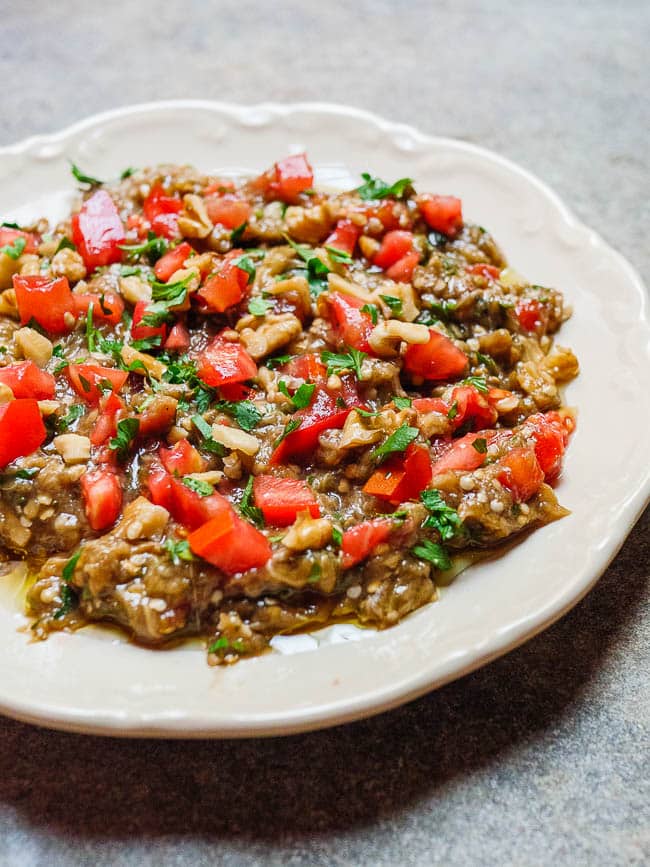
There’s a little confusion as to what baba ganoush actually is.
For a long time, I thought it unambiguously referred to smoked aubergine mashed with a little tahini. I even gave my recipe to one of Norway’s major weekend magazines, unambiguously referring to it as baba ganoush. Wrong.
Well, sort of.
In much of the Arab speaking world, certainly in most of Syria and Palestine, the smoky aubergine dip with tahini is known as moutabal.
For baba ganoush tangy flavours are substited for the tahini: Tomato, pomegranate molasses, fresh herbs.
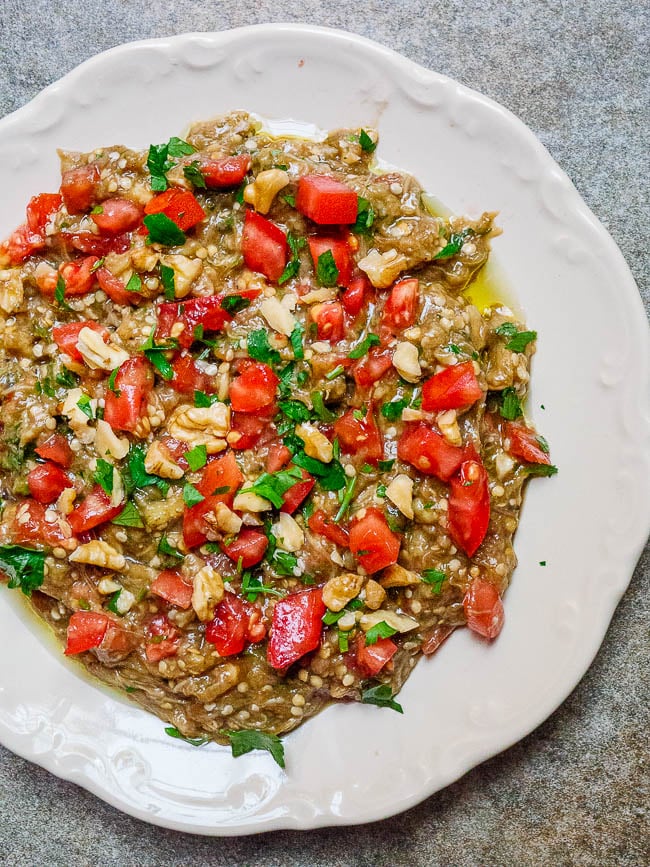
To avoid any confusion, I’ve decided to call this Syrian baba ganoush, mainly because it is loosely based on a recipe from Syrian Foodie in London, run by a Syrian doctor living in Britain. Similar versions also exist in Palestine or across the border in South-Eastern Turkey – and likely in other Levantine cuisines too.
How to make Syrian baba ganoush
While the name may be uncertain, this surely is not: This salad will be on my table for every single barbecue this sommer.
The freshness of the tomato, the sweet and sour zing from the pomegranate molasses and the deliciously smoky aroma of the aubergines makes for a flavour bomb!
As with any dish based on smoked aubergine, the key is to burn the aubergine properly. A gas flame is good, a barbecue even better.
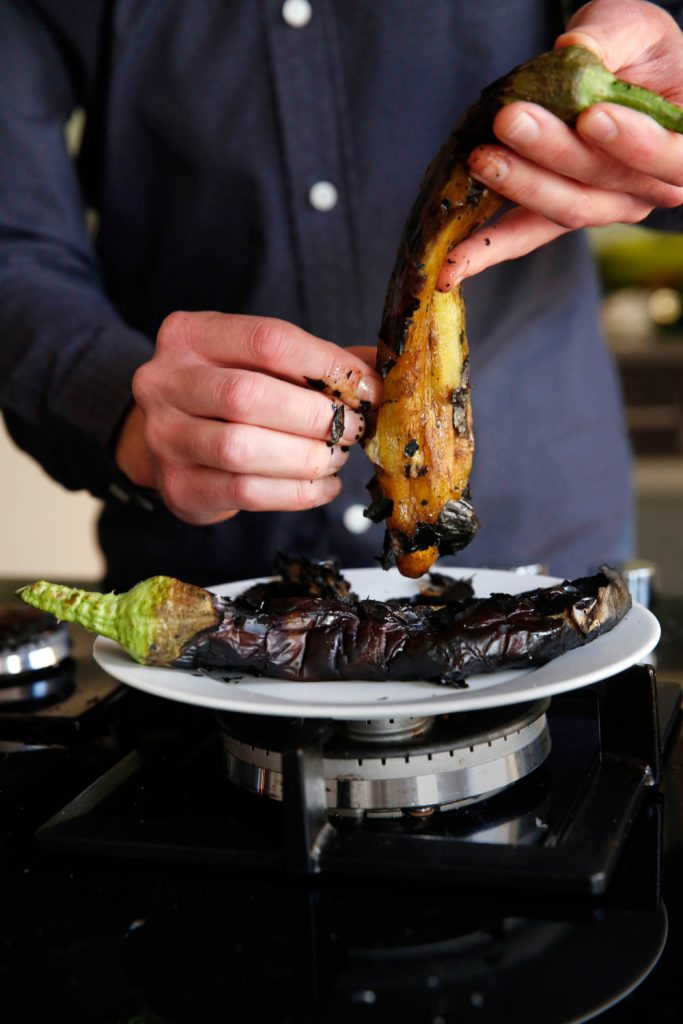
Some suggest the oven grill does much the same. I tend to disagree. While this will also give a tasty result, you’ll never be able to get the smokiness that is so characteristic of smoked aubergine dishes such as this.
Regardless of your chosen method – remember to air well. This is the stuff of fire alarm-offsetting smokiness.
How to serve
I usually serve this dish one of two ways. Either as part of a meze table, alongside 3-6 other dishes (depending how many are eating together).
It is also brilliant along any barbecued meat, which is the second way I often serve it. It really balances the umami of the meat well.
The recipe makes a small plate, as seen in the photos, usually enough for 3-4 people.
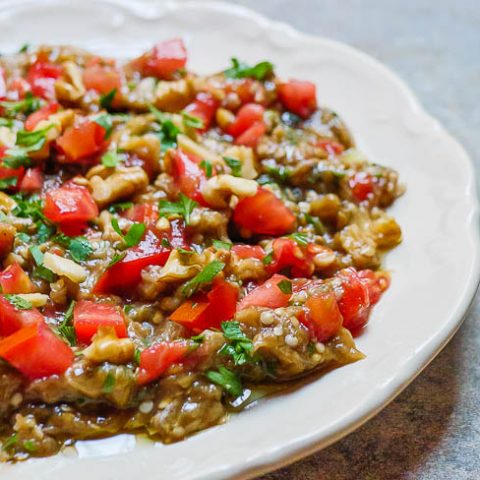
Syrian baba ganoush
Ingredients
- 2 large aubergine (eggplant)
- 1 garlic clove, crushed to a paste with a little salt
- 1 small tomato, finely chopped
- 2 Tbsp finely chopped flat-leaf parsley
- 1 ½ Tbsp chopped walnuts
- 2 Tbsp pomegranate molasses
- 1 Tbsp lemon juice
- salt and pepper
How I make it
- Pierce the aubergines (eggplants) with a fork in a few places. Burn over a direct flame or near a hot grill, turning occasionally, until soft inside and completely burnt outside, 10-15 minutes or longer. When cool enough to handle, peel and discard the burnt skin.
- Cut the aubergine crosswise a few times (to avoid long strings of aubergine) and mix with the remaining ingredients. Season to taste with salt and pepper, and add more pomegranate molasses or herbs to taste, if you like. The dish can be made a few hours in advance, in which case cover well until serving.


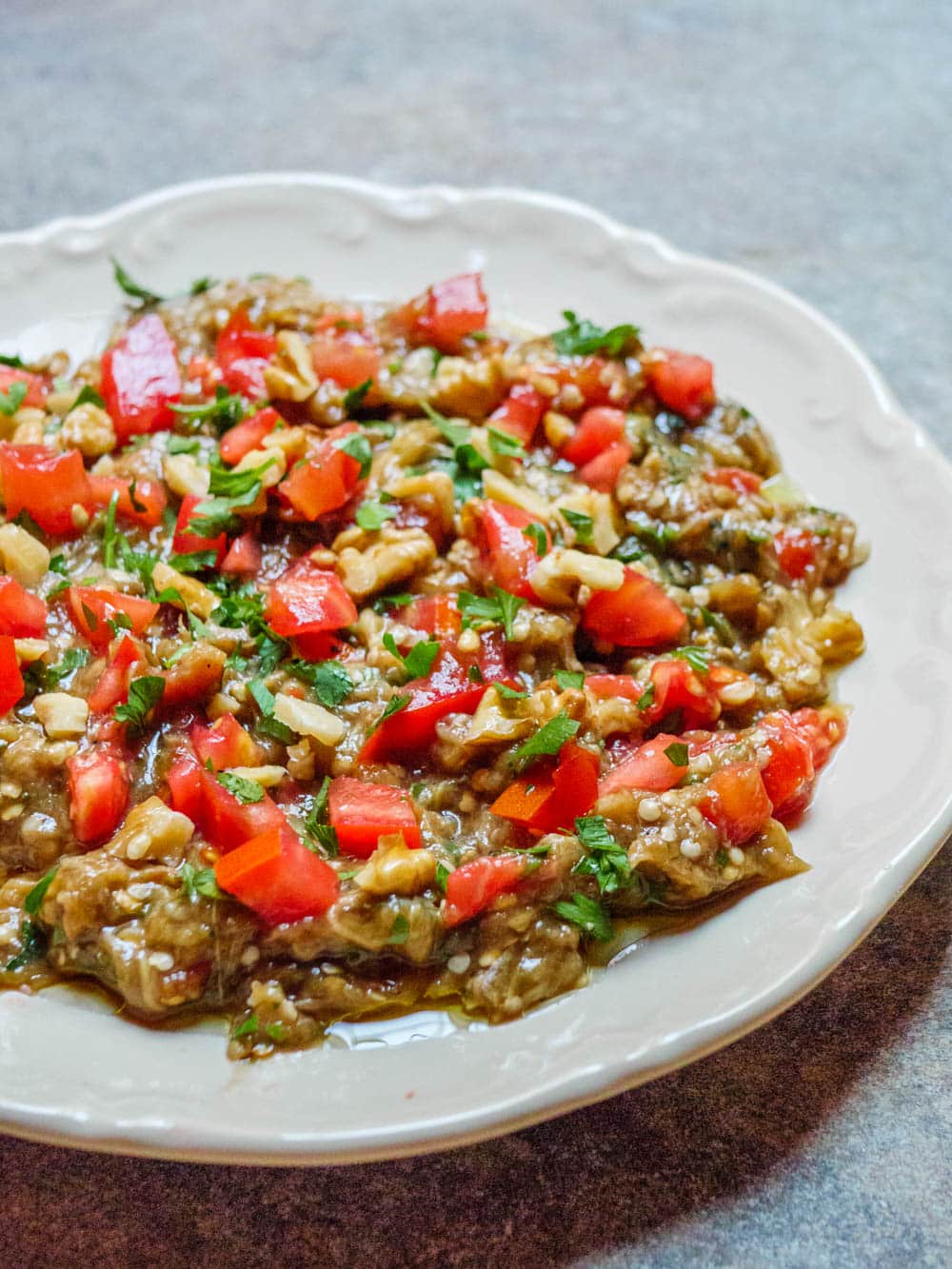


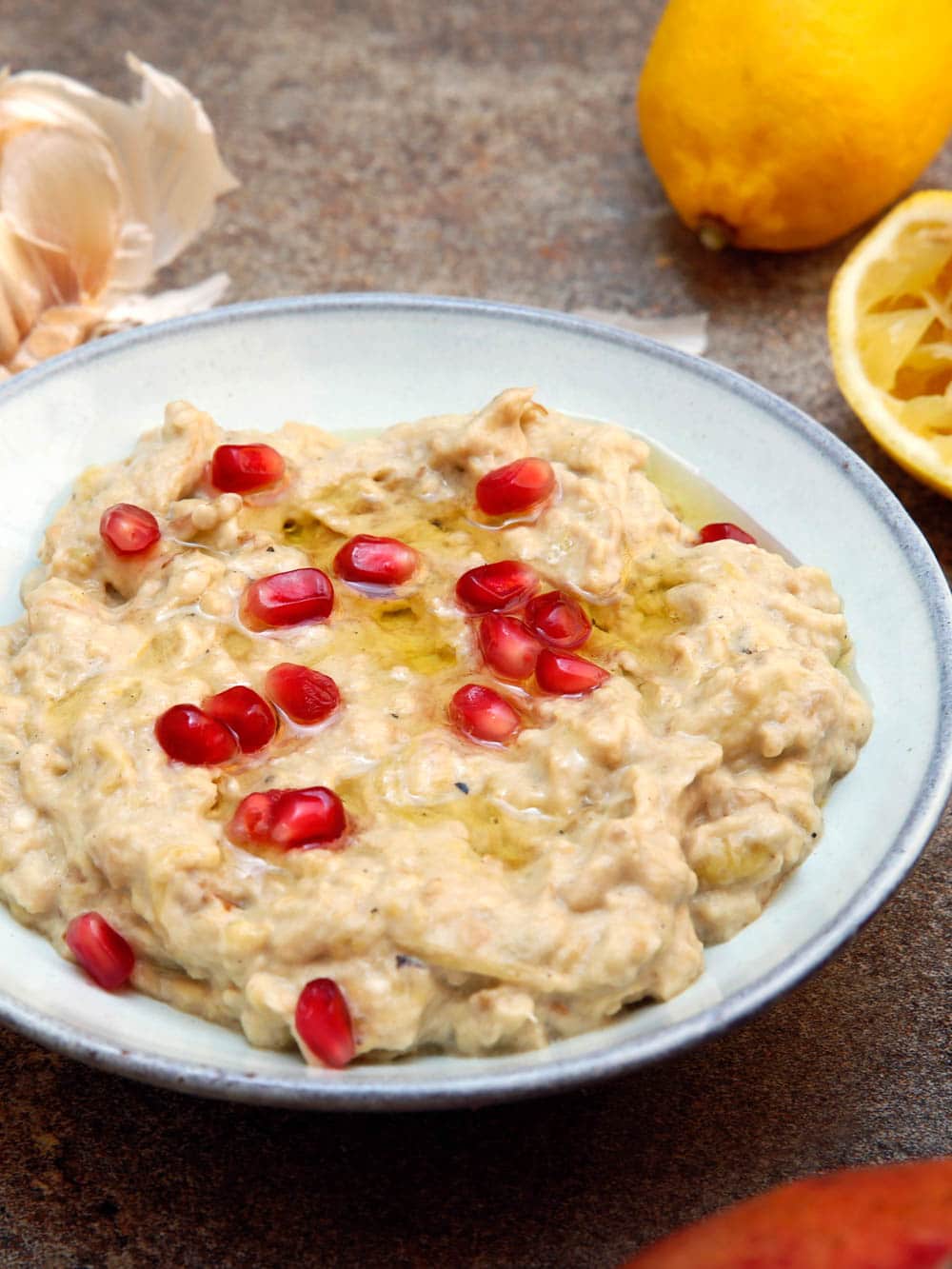
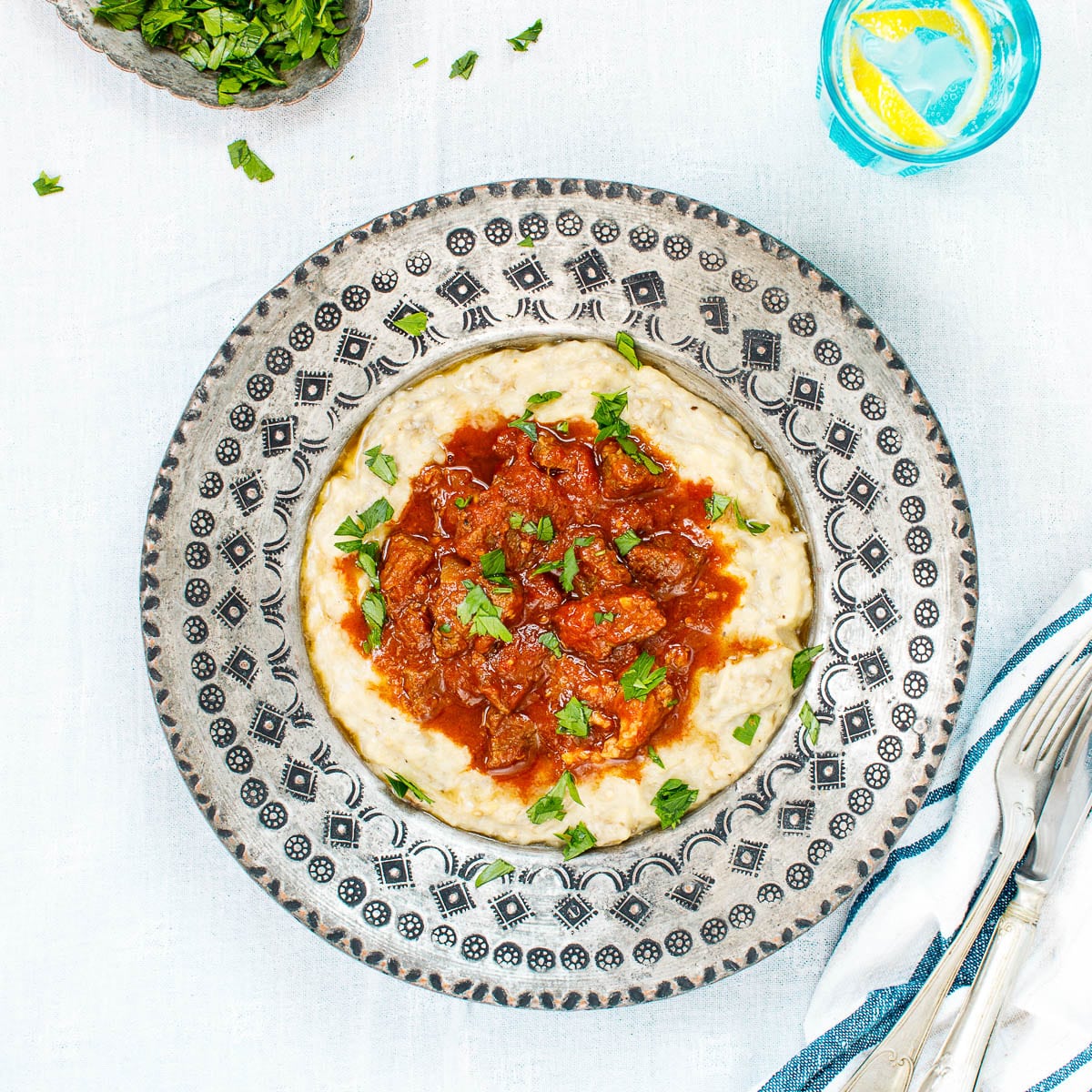
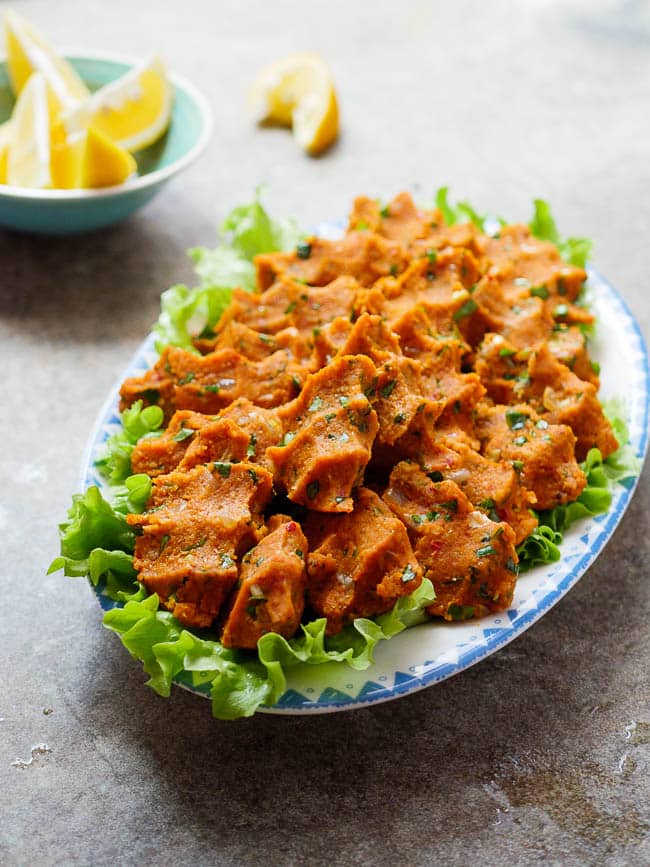
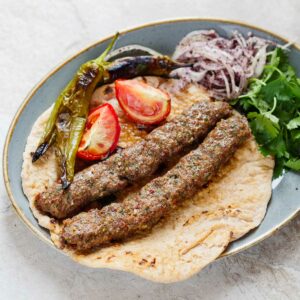
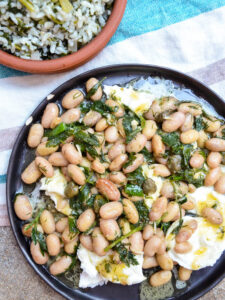
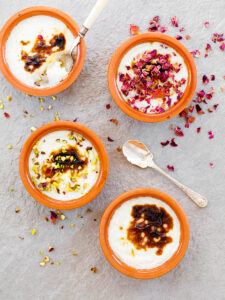




6 responses
Just found and tried this recipe. I used balsamic vinegar instead of pomegranate but the result is nonetheless amazing. Thank you.
Can i leave the nut out or use a substitute due to allergy.
You can leave them out or substitute pine nuts, if compliant with any allergies. Good luck!
What do you recommend as a substitute for the Pomegrante molasses. In my country (Nicaragua) it is very hard to find pomegrante. I read these could be options to replace it: cranberry juice concentrate, balsamic vinegar with sugar or tamarind paste with honey. Which one do you think will go better with this recipe? Thanks!
Excellent! I was at a mediterranean spot run by a Syrian family and this was on the menu. This seems to fit their version of this dish. I much prefer it over the warm tahini version. Thank you.
Thank you! Glad to hear you enjoyed it.